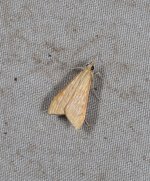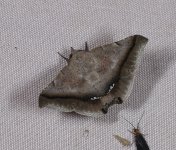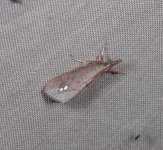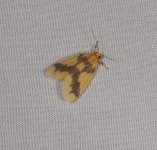The ID of Trissodoris is incorrect - it is infact a Stathmopoda species (the big curved labial palps are just visible in this image and I have since triple checked another out of focus angle and the palps are clearly Stathmopoda like...back to the drawing board for this one!Slowly working through my photos from April. These two were particularly pleasing to find.
Imma atrosignata - I believe this is the second example of Imma atrosignata that I have caught (the first being on TI April 2021). I am unsure of its status in Australia, it is not listed on the digital AFD directory at all but on page 150 of the printed checklist it is as "Imma melanosphena Meyrick, 1918 (Imma), repl.name atrosignata sensu Turner 1913" It is listed by both Meyrick and Turner in various published articles on Australian Lepifauna (as per BHL)
When I look at funet.fi it lists both as valid species and the labelled photos of the two species (melanosphena and atrosignata) that I can find do seem different with the later having a very strong white fringe to the termin as well as an obvious white mark in the apex of the costa - both of which appear to be missing in melanophena. This is the Imma astrosignata on PIF https://www.papua-insects.nl/.../Imma/Imma%20atrosignata.htm which looks looks identical mine
Trissodoris euphaedra (Cosmopterginae) - I have caught this a couple of times but have only now tracked down its ID. As far as I can tell this is the first published photo of a live specimen
-
Welcome to BirdForum, the internet's largest birding community with thousands of members from all over the world. The forums are dedicated to wild birds, birding, binoculars and equipment and all that goes with it.
Please register for an account to take part in the discussions in the forum, post your pictures in the gallery and more.
You are using an out of date browser. It may not display this or other websites correctly.
You should upgrade or use an alternative browser.
You should upgrade or use an alternative browser.
Australian Moths and other garden observations (3 Viewers)
- Thread starter Atropos
- Start date
More options
Who Replied?I am over six weeks behind with my photos so all I am managing to do after each session is a quick run through to delete obvious out of focus image. A very quick sort from Fridays trapping session in the forest area (was too windy for my main site) came up with these highlights
Agrotera ignepicta (Spilomelinae) - this has been a regular feature on the sheet this year
Avatha discolor (Erebidae) - another species that has been commoner than usual this Wet
Clostera rubida (Notodontinae) - norally a rare visitor to the my sheet on the Cape I have had five individuals in the last two weeks.
Donuca orbigera (Erebidae) - there were at least three on the sheet over the weekend, sadly I did not check my image carefully enough and it has been photo bombed by something ....
Dysbatus (Geometrinae) - I have not managed to get my head round this genus yet, there are several similar species that could possibly occur on the Cape
Euchromia aemulinae (Arctiinae) - only my second record for this species, both from Weipa
Metopiora sanguinata (Noctuinae) - a regular on the sheet throughout the Wet, usually in single but the last couple of weeks there have been several a night
Protulioncnemis partita (Geometrinae) - probably my favourite Geometrinae genus
Termioptycha eucarta (Epipaschiinae) - a nie male, only catch this on a couple of occasions each year so always good to see
Thosea threnopis (Limacodidae) - a regular visitor to the sheet this year
Tonica effractella (Depressariidae) - usually a common visitor to the sheet this species has been scarce this season and from memory this is only the third I have caught
Xestocasis balanochrysa (Cosmopterginae) - an annual visitor to the sheet
Agrotera ignepicta (Spilomelinae) - this has been a regular feature on the sheet this year
Avatha discolor (Erebidae) - another species that has been commoner than usual this Wet
Clostera rubida (Notodontinae) - norally a rare visitor to the my sheet on the Cape I have had five individuals in the last two weeks.
Donuca orbigera (Erebidae) - there were at least three on the sheet over the weekend, sadly I did not check my image carefully enough and it has been photo bombed by something ....
Dysbatus (Geometrinae) - I have not managed to get my head round this genus yet, there are several similar species that could possibly occur on the Cape
Euchromia aemulinae (Arctiinae) - only my second record for this species, both from Weipa
Metopiora sanguinata (Noctuinae) - a regular on the sheet throughout the Wet, usually in single but the last couple of weeks there have been several a night
Protulioncnemis partita (Geometrinae) - probably my favourite Geometrinae genus
Termioptycha eucarta (Epipaschiinae) - a nie male, only catch this on a couple of occasions each year so always good to see
Thosea threnopis (Limacodidae) - a regular visitor to the sheet this year
Tonica effractella (Depressariidae) - usually a common visitor to the sheet this species has been scarce this season and from memory this is only the third I have caught
Xestocasis balanochrysa (Cosmopterginae) - an annual visitor to the sheet
Attachments
-
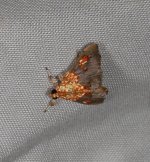 Agrotera ignepicta (2).JPG1.1 MB · Views: 5
Agrotera ignepicta (2).JPG1.1 MB · Views: 5 -
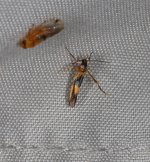 Xestocasis balanochrysa.JPG626.8 KB · Views: 5
Xestocasis balanochrysa.JPG626.8 KB · Views: 5 -
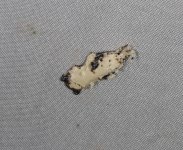 Tonica effractella.JPG1.5 MB · Views: 4
Tonica effractella.JPG1.5 MB · Views: 4 -
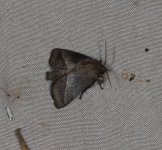 Thosea threnopis.JPG1.3 MB · Views: 4
Thosea threnopis.JPG1.3 MB · Views: 4 -
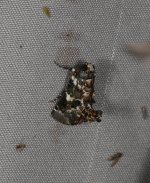 Termioptycha eucarta male (2).JPG1 MB · Views: 4
Termioptycha eucarta male (2).JPG1 MB · Views: 4 -
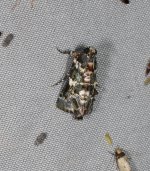 Termioptycha eucarta male (1).JPG1,004.4 KB · Views: 6
Termioptycha eucarta male (1).JPG1,004.4 KB · Views: 6 -
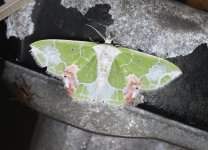 Protuliocnemis partita.JPG1.3 MB · Views: 6
Protuliocnemis partita.JPG1.3 MB · Views: 6 -
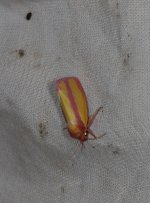 Metopiora sanguinata.JPG771.6 KB · Views: 7
Metopiora sanguinata.JPG771.6 KB · Views: 7 -
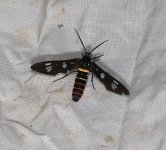 Euchromia aemulina.JPG2.1 MB · Views: 6
Euchromia aemulina.JPG2.1 MB · Views: 6 -
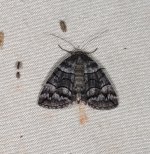 Dysbatus.JPG1.7 MB · Views: 7
Dysbatus.JPG1.7 MB · Views: 7 -
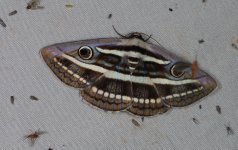 Donuca orbigera.JPG2.4 MB · Views: 6
Donuca orbigera.JPG2.4 MB · Views: 6 -
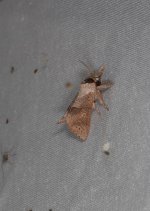 Clostera rubida.JPG663.1 KB · Views: 6
Clostera rubida.JPG663.1 KB · Views: 6 -
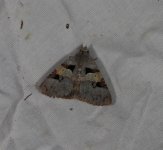 Avatha discolor.JPG1.4 MB · Views: 4
Avatha discolor.JPG1.4 MB · Views: 4
I was out briefly last night but a combination of lack of cloud cover and strong winds made conditions far from ideal and very little appeared on the sheet so I cut my losses and went home!
These two were about the best of the bunch
Anemosa isadasalis (Crambidae, Chrysauginae) - I have caught a few Anemosa over the last five years and the majority of them say at genus level as the species do not appear to be very clearly defined in the literature and there are several undescribed species, this one with the dots is the exception and can be put at species level...although confusingly not all individuals show the dots....
Macaldenia palumba (Erebidae, Erebinae) - a scarce visitor to the sheet most years, this Wet was above average with at individuals seen on at least six nights
These two were about the best of the bunch
Anemosa isadasalis (Crambidae, Chrysauginae) - I have caught a few Anemosa over the last five years and the majority of them say at genus level as the species do not appear to be very clearly defined in the literature and there are several undescribed species, this one with the dots is the exception and can be put at species level...although confusingly not all individuals show the dots....
Macaldenia palumba (Erebidae, Erebinae) - a scarce visitor to the sheet most years, this Wet was above average with at individuals seen on at least six nights
Attachments
Managed to get out last night for the first time in a fortnight! Was quite calm when setting up but within minute of it getting dark the wind picked up and my phone beeped letting me know that a Maritime Wind Warning had just been issued for Weipa! That said the night was surprisingly rductive - with the exception of micros... I have many shots of where they were sitting but fewer of the moth itself!
Aiteta pratti - it continues to be an excellent year for this species with at least 4-5 on the sheet at any one time
Arhodia lasiocamparia - my first for a few months
Callopistria coelisigna - this has been a regular visitir this year
Casbia rhodoptila
Euchromia aemulina - there were at least four on the sheet last night including a pair in copulo but the image was too large to upload here
Oeonochroma pallida - one of three species of Oenochroma on the sheet last night
Paectes cyanodes - an annual if scarce visitor
Psamatodes abydata - it has been a very good year for this invasive species. I usually catch a couple each season but this year I have had several nights with multiples on the sheet, last night there were at least three
Spirama recessa - a nice female
Zeheba spectabilis - a much darker individual than sometimes
Aiteta pratti - it continues to be an excellent year for this species with at least 4-5 on the sheet at any one time
Arhodia lasiocamparia - my first for a few months
Callopistria coelisigna - this has been a regular visitir this year
Casbia rhodoptila
Euchromia aemulina - there were at least four on the sheet last night including a pair in copulo but the image was too large to upload here
Oeonochroma pallida - one of three species of Oenochroma on the sheet last night
Paectes cyanodes - an annual if scarce visitor
Psamatodes abydata - it has been a very good year for this invasive species. I usually catch a couple each season but this year I have had several nights with multiples on the sheet, last night there were at least three
Spirama recessa - a nice female
Zeheba spectabilis - a much darker individual than sometimes
Attachments
-
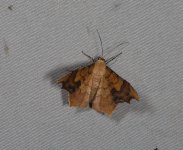 Zeheba spectabilis.JPG1.7 MB · Views: 4
Zeheba spectabilis.JPG1.7 MB · Views: 4 -
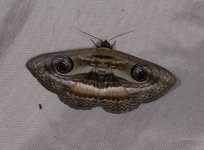 Spirama recessa.JPG2.9 MB · Views: 4
Spirama recessa.JPG2.9 MB · Views: 4 -
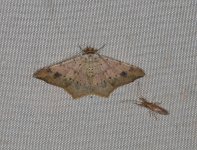 Psamatodes abydata.JPG1.5 MB · Views: 4
Psamatodes abydata.JPG1.5 MB · Views: 4 -
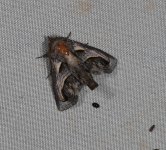 Paectes cyanodes.JPG1.8 MB · Views: 4
Paectes cyanodes.JPG1.8 MB · Views: 4 -
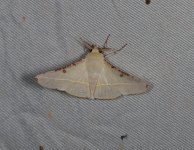 Oenochroma pallida.JPG2.1 MB · Views: 4
Oenochroma pallida.JPG2.1 MB · Views: 4 -
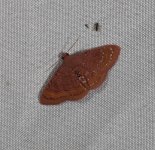 Homodes bracteigutta.JPG1.2 MB · Views: 4
Homodes bracteigutta.JPG1.2 MB · Views: 4 -
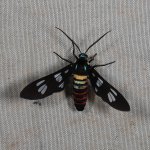 Euchromia aemulina 01 06 2024 (1).JPG3.3 MB · Views: 4
Euchromia aemulina 01 06 2024 (1).JPG3.3 MB · Views: 4 -
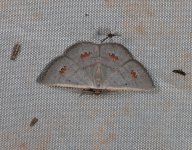 Casbia rhodoptila.JPG1.4 MB · Views: 4
Casbia rhodoptila.JPG1.4 MB · Views: 4 -
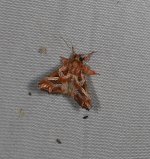 Callopistria coelisigna.JPG1.5 MB · Views: 4
Callopistria coelisigna.JPG1.5 MB · Views: 4 -
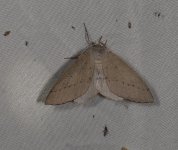 Arhodia lasiocamparia.JPG3.4 MB · Views: 4
Arhodia lasiocamparia.JPG3.4 MB · Views: 4 -
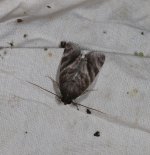 Aiteta pratti.JPG1.3 MB · Views: 4
Aiteta pratti.JPG1.3 MB · Views: 4
Trapping opportunities hae been few and far between recently thanks to other comitments but was free last night and so despite the clear skies and very bright moon I went out. It was surprisingly productive until about 11pm when the temp dropped by 5o to a very chilly, for the Tropics that is, 18o and activity dropped to virtually nothing.
One of the features was the precence of atleast ten of these as yet undescribed Lomera (Psychidae) species. These must all have been relatively recently eclosed as there is little or no scale damage on the wings
One of the features was the precence of atleast ten of these as yet undescribed Lomera (Psychidae) species. These must all have been relatively recently eclosed as there is little or no scale damage on the wings
Attachments
Work and family commitments continue to disrupt my trapping opportunities and the weather isn't helping much at the moment either. Has turned into a very odd Dry season here with heavy cloud and the occasional light rain making ideal conditions that are only ruined by the ridiculous wind that is accompanying it... MAnaged to tuck myself away in my woodland site on Friday night and whilst not a complete loss it was very quiet and so packed up by 11pm as very little was coming to the sheet.
Among the obvious highlights were my first Sympycnodes salterra (Cossidae) for three years - interestingly the 2012 paper describing this new species gives its flight period as August to February so this is slightly earlier than would be expected; Hyperythra rubricata (Geometridae, Ennominae) and two more Euchromia aelumina (Arctiidae) whiach are having a very good year so far
Among the obvious highlights were my first Sympycnodes salterra (Cossidae) for three years - interestingly the 2012 paper describing this new species gives its flight period as August to February so this is slightly earlier than would be expected; Hyperythra rubricata (Geometridae, Ennominae) and two more Euchromia aelumina (Arctiidae) whiach are having a very good year so far
Attachments
In a non moth related post can I just say Influenza A sucks! Have been out of action since late June and even now have zero energy for anything...have been lucky though as two of our children have been hospitalised (including our daughter who was 28 weeks pregnant and admited to ICU...) all are on the mend but boy this has not been fun.....probably wont get the traps out at all until the end of the month when I have a three night trip in Kutini-Payamu NP booked so need to be fit for that!
Stuart Goodwin
Well-known member
Morning/ evening.In a non moth related post can I just say Influenza A sucks! Have been out of action since late June and even now have zero energy for anything...have been lucky though as two of our children have been hospitalised (including our daughter who was 28 weeks pregnant and admited to ICU...) all are on the mend but boy this has not been fun.....probably wont get the traps out at all until the end of the month when I have a three night trip in Kutini-Payamu NP booked so need to be fit for that!
I hope you are all back on your feer soon. It sounds horrible, particularly when your children have it worse.
Regards
JWN Andrewes
Poor Judge of Pasta.
Sorry to hear that Atropos. Wishing you & yours a speedy & full recovery.
Thank you for your comments, am feeling much better now and am back to working on my backlog of photos although still not attempting to go out trapping.
One genus that has been very well represented this year has been Crocanthes (Lecitherocidae) here are the six species that I am routinely catching
Crocanthes venustula - prior to me moving to Weipa this was only known from a single speciemen from the very top of Cape York aught in 1903. It is at times quite a common visitor to the sheet
Crocanthes characotis
Crocanthes diula - the commonest of the species that I catch
Crocanthes pancala
Crocanthes trizona - probably the scarcest of the species
Crocanthes zonodesma
One genus that has been very well represented this year has been Crocanthes (Lecitherocidae) here are the six species that I am routinely catching
Crocanthes venustula - prior to me moving to Weipa this was only known from a single speciemen from the very top of Cape York aught in 1903. It is at times quite a common visitor to the sheet
Crocanthes characotis
Crocanthes diula - the commonest of the species that I catch
Crocanthes pancala
Crocanthes trizona - probably the scarcest of the species
Crocanthes zonodesma
Attachments
-
 Crocanthes zonodesma 04 05 2024 (2).JPG980.7 KB · Views: 5
Crocanthes zonodesma 04 05 2024 (2).JPG980.7 KB · Views: 5 -
 Crocanthes trizona 04 05 2024 (2).JPG712.5 KB · Views: 5
Crocanthes trizona 04 05 2024 (2).JPG712.5 KB · Views: 5 -
 Crocanthes pancala 04 05 2024.JPG1,019.7 KB · Views: 5
Crocanthes pancala 04 05 2024.JPG1,019.7 KB · Views: 5 -
 Crocanthes diula 04 05 2024.JPG695 KB · Views: 5
Crocanthes diula 04 05 2024.JPG695 KB · Views: 5 -
 Crocanthes characotis 04 05 2024 (1).JPG935.5 KB · Views: 5
Crocanthes characotis 04 05 2024 (1).JPG935.5 KB · Views: 5 -
 Crocanthe venustula 12 01 2024.JPG485.8 KB · Views: 5
Crocanthe venustula 12 01 2024.JPG485.8 KB · Views: 5
Just back from three nights trapping at Kutini-payamu, much windier than I would have liked almost verging on the untrappable. The first night was dire but I was in a public location to show a few groups some moths so anything was a bonus but the last two I was tucked away out the wind and for the Dry season had a successful trip with a handful of amazing species. Some intial highlights here
Lyssa macleayi (Uraniidae) - saw several of these very large moths flying around but this one was very obliging when we went lamping for Green Tree Pythons
Amatissa fuscescens (Psychidae) - Amatissa is not currently officially in the AFD but it is known from a handful of records on the eastern seaboard of FNQ. I caught two pristine specimens
Pseudangonyx excellens (sphingidae) - one of the rarer of the Autralian Sphingidae with only aprox 20 published records. Nothing is known about their caterpillars and they are a species that is very uncommon in major collections. In 12 years of trapping this is only the third specimen I have seen.
Imma lyrifera (Immidae) - one of the least recorded Imma across its range. I have recorded it on 5 occasions prior to this trip and this hyear there were 2 present on the sheet each night. Also knon from a single specimen in PNG
Imma sp nr chrysoploca (Immidea) - I have recorded this on three occasions in the last ten years (the only known records), this is an undescribed species close to chrysoploca that occurs in PNG, I attempted to retain it for ANIC but the wind had other ideas and it escaped so the wait continues to get a voucher specimen for it to be described from!
Lyssa macleayi (Uraniidae) - saw several of these very large moths flying around but this one was very obliging when we went lamping for Green Tree Pythons
Amatissa fuscescens (Psychidae) - Amatissa is not currently officially in the AFD but it is known from a handful of records on the eastern seaboard of FNQ. I caught two pristine specimens
Pseudangonyx excellens (sphingidae) - one of the rarer of the Autralian Sphingidae with only aprox 20 published records. Nothing is known about their caterpillars and they are a species that is very uncommon in major collections. In 12 years of trapping this is only the third specimen I have seen.
Imma lyrifera (Immidae) - one of the least recorded Imma across its range. I have recorded it on 5 occasions prior to this trip and this hyear there were 2 present on the sheet each night. Also knon from a single specimen in PNG
Imma sp nr chrysoploca (Immidea) - I have recorded this on three occasions in the last ten years (the only known records), this is an undescribed species close to chrysoploca that occurs in PNG, I attempted to retain it for ANIC but the wind had other ideas and it escaped so the wait continues to get a voucher specimen for it to be described from!
Attachments
Very slow going with the photos etc from my last trip due to other commitments, so far only managed to go through aout 50 photos...am in Cairns for appointments next week so shall take my laptop with me and with luck can complete the initial sort through.
One of the many known unknowns and with out doubt my favourite "Euproctis" species is this one. Currently listed as Euproctis ANIC 1 but with the work done by Holloway this is almost certainly not the corect genus but will stick with this for the time being. As best I can tell this is known from only four specimens - thre on BOLD and mine from two years ago, although for un-named species tracking down records is tricky to say the least
One of the many known unknowns and with out doubt my favourite "Euproctis" species is this one. Currently listed as Euproctis ANIC 1 but with the work done by Holloway this is almost certainly not the corect genus but will stick with this for the time being. As best I can tell this is known from only four specimens - thre on BOLD and mine from two years ago, although for un-named species tracking down records is tricky to say the least
Attachments
Slowly going through the Kutini-payamu photos with a lot of micros temporarily residing in the "havent got a clue" basket but will whittle that don over the next few months. A quartet of classic top of the Cape species
Celerana griseofusa (Geometridae, Desmonbathrinae) - not as common as previous trips recorded on only one night
Licnoptera sp A ; Parascaptia trifasciata and Stenoscaptia fovealis (Arctiinae, Lithosiini) - all present in small numbers on nights two and three
Celerana griseofusa (Geometridae, Desmonbathrinae) - not as common as previous trips recorded on only one night
Licnoptera sp A ; Parascaptia trifasciata and Stenoscaptia fovealis (Arctiinae, Lithosiini) - all present in small numbers on nights two and three
Attachments
This one got me confused, it didnt really settle so I was not sure what it was (photo on left). Thanks to a friend who ID'd it, it turns out it was my second record, and as far as I can tell Australia's fourth record of Thaumatographe singularis (Geometridae, Oenochrominae) ...if it had settled I would have recognised it by its distinctive posture...second photo of it at rest from Aug 2022
Attachments
Similar threads
Users who are viewing this thread
Total: 4 (members: 0, guests: 4)




